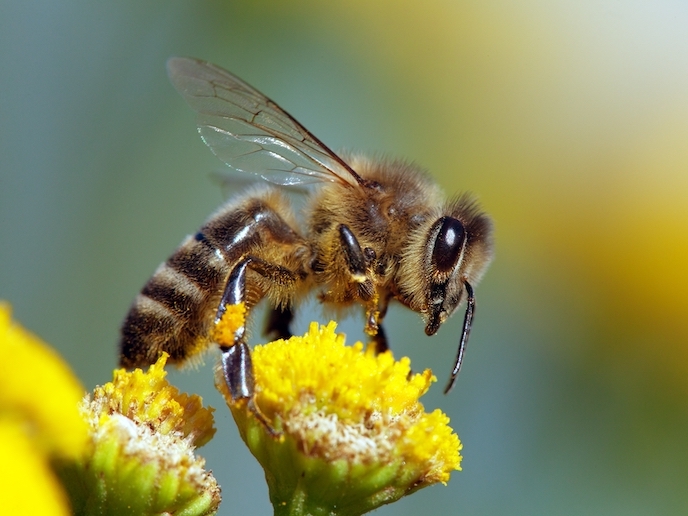Getting to the bottom of honeybee behaviour
Responsible for pollinating 80 % of crop plants in Europe, the honeybee is our most important managed species of pollinator. Unfortunately, like many insect and bee species, honeybee populations are declining. As this trend could detrimentally affect everything from food security to biodiversity, it’s essential we learn everything we can about the species. Part of the reason honeybees are such efficient pollinators can be attributed to their life history. “Honeybees live in large colonies, with each colony having only one reproductive female who prevents other females from reproducing via what is called queen mandibular pheromone(opens in new window), or QMP,” says Elizabeth Duncan, a zoologist at the University of Leeds(opens in new window). “As a result, the colony is left with 40 000 worker bees available to collect food and look after the colony – which is what makes them such efficient pollinators.” Duncan led the EU-funded and Marie Skłodowska-Curie Actions(opens in new window) supported DRiveR project, which aimed to determine whether dopamine, a biogenic amine(opens in new window), links the honeybee’s brain and ovary whenever it’s exposed to QMP. “Knowing this would allow us to determine whether environmental perturbations, such as exposure to pesticides, disrupt this signalling,” adds Duncan. “And if they did, whether this disruption creates problems within the colony that could result in population declines.”
A step change in understanding
Researchers quickly found that the relationship between dopamine, the brain, the ovary and QMP is incredibly complex. For example, in the brain, dopamine acts by binding to dopamine receptors. According to Duncan, not only are these receptors expressed in the ovary, this expression is extremely responsive to the queen and her pheromone. “When the queen is present, the receptors and dopamine-responsive genes are highly expressed in the ovary,” explains Duncan. “However, as soon as the queen is removed, even before we see any changes in the worker bees or their ovaries, there is a decrease in both the expression of the receptors and the responsive genes.” This finding suggests that dopamine signalling is one of the first things that changes in the honeybee ovary, thus implying that it is part of the primary response to the loss of the queen. “Finding out how the bee, and in particular the ovary, is affected by the loss of QMP tells us a lot about the primary response of the ovary,” adds Duncan. “This represents a step change in our understanding of how the ovary responds to QMP and the role that dopamine plays in this process.”
Overcoming challenges
The DRiveR project ran into several unexpected challenges from the start. Yet despite bad weather, the COVID-19 pandemic, and issues with the technology, researchers succeeded in gaining new insights into bee behaviour and how pesticides affect this behaviour. “This work was only possible with the support of my incredible team, which included two postdoctoral fellows and three PhD students in varying capacities,” concludes Duncan. “The difficulties we faced as a team meant we had to be creative, flexible, and think outside the box – all of which are valuable skills for any researcher and ultimately made this project stronger.” Duncan is currently researching how dopamine receptor expression is regulated in the honeybee ovary and how this system is affected by pesticides.







